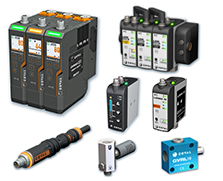Gripping air-tight and porous objects

The job of the vacuum pump is to generate a relative vacuum within a capacity. For vacuum handling, this capacity generally consists of:
.the internal volume of the suction pads to be emptied,
. the volume of the network (piping).
Air-tight objects
This is the only capacity to be taken into consideration.
The choice of vacuum pump will be made according to the time to create the vacuum corresponding to the function.
The maximum rate of vacuum it is possible to attain. It is useful to take the 90% vacuums (version N).
Porous objects
In this case it will not be possible to empty the capacity. The leakage rate from the suction pad network will therefore be taken into account.
The vacuum pump adapted to this type of handling is therefore a vacuum pump for which the fl ow will be signifi cantly greater than the leakage in order to create sufficient pressure drop in the suction pads.
High fl ow rate will be chosen in preference to a high vacuum,75 % vacuum (version T), 60% vacuum, or 50 % vacuum (version X) for very porous objects such as light cardboard, or foam, etc.